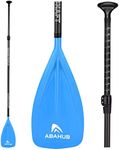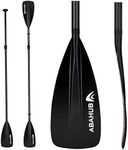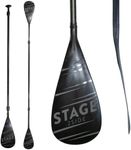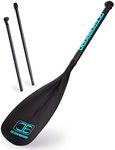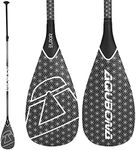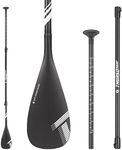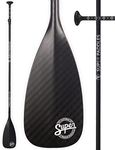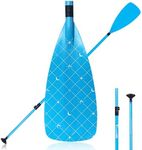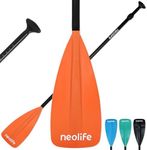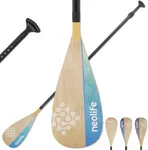Buying Guide for the Best Carbon Paddle Boards
Choosing the right carbon paddle board can significantly enhance your paddling experience, whether you're a beginner or an experienced paddler. Carbon paddle boards are known for their lightweight and durability, making them a popular choice for various water activities. To make an informed decision, it's essential to understand the key specifications and how they align with your needs and preferences.Board LengthBoard length is crucial as it affects the board's speed, stability, and maneuverability. Shorter boards (under 10 feet) are more agile and easier to turn, making them ideal for surfing and recreational paddling. Medium-length boards (10-12 feet) offer a balance of speed and stability, suitable for all-around use. Longer boards (over 12 feet) are faster and track better, perfect for long-distance paddling and racing. Choose a length based on your intended use and skill level.
Board WidthBoard width impacts stability and performance. Narrow boards (under 30 inches) are faster and more responsive, ideal for racing and experienced paddlers. Medium-width boards (30-32 inches) provide a balance of speed and stability, suitable for all-around use. Wider boards (over 32 inches) offer maximum stability, making them great for beginners, yoga, and fishing. Consider your balance and the type of paddling you'll be doing when selecting the width.
Board ThicknessBoard thickness affects buoyancy and rigidity. Thicker boards (over 5 inches) are more buoyant and can support more weight, making them suitable for larger paddlers or carrying gear. Thinner boards (under 5 inches) are lighter and more responsive, ideal for performance paddling and surfing. Choose a thickness that matches your weight and the type of paddling you plan to do.
Board VolumeBoard volume, measured in liters, indicates the board's capacity to float and support weight. Higher volume boards (over 200 liters) are more buoyant and stable, suitable for beginners and heavier paddlers. Lower volume boards (under 200 liters) are less buoyant but more agile, ideal for experienced paddlers and performance activities. Match the board volume to your weight and skill level for optimal performance.
Board ShapeBoard shape influences how the board handles in different conditions. All-around shapes are versatile and suitable for various activities, including flatwater paddling and small waves. Touring shapes are longer and narrower, designed for speed and efficiency in long-distance paddling. Surf shapes are shorter and more maneuverable, perfect for catching waves. Choose a shape based on your primary paddling activity.
Fin SetupFin setup affects the board's tracking and maneuverability. Single fin setups offer good tracking and are easy to use, ideal for flatwater paddling. Three-fin (thruster) setups provide better control and maneuverability, suitable for surfing. Multiple fin setups (quad or five-fin) offer enhanced performance in various conditions. Consider your paddling style and the conditions you'll be paddling in when choosing a fin setup.
WeightThe weight of the board is important for transport and handling. Lighter boards are easier to carry and maneuver, making them ideal for frequent use and travel. Heavier boards may offer more stability but can be challenging to transport. Consider your ability to carry the board and how often you'll be transporting it when selecting the weight.
ConstructionCarbon paddle boards are known for their lightweight and durability. The construction quality affects the board's performance and longevity. Look for boards with high-quality carbon fiber construction for the best balance of weight, strength, and durability. Consider how often you'll be using the board and in what conditions to determine the level of construction quality you need.
